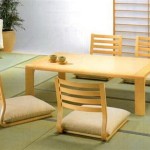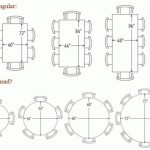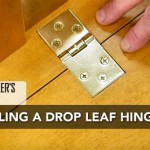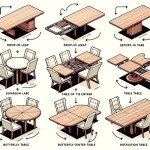Standard Height for Pool Tables: A Comprehensive Guide
The height of a pool table is a critical factor influencing the overall playing experience. A pool table set at the incorrect height can lead to discomfort, poor posture, and ultimately, compromised shot accuracy. Therefore, understanding the standard height specifications and the rationale behind these standards is essential for both players and pool table owners.
The internationally recognized standard height for a pool table, measured from the floor to the top of the playing surface (the cloth), is between 29.25 inches and 31 inches (74.3 cm and 78.7 cm). This range is established and maintained by organizations such as the World Pool-Billiard Association (WPA) and the Billiard Congress of America (BCA). These organizations oversee the rules and regulations governing the sport, including equipment specifications.
This specific height range is not arbitrary. It is the result of careful consideration aimed at accommodating a majority of players while promoting consistent gameplay. The height allows for optimal stance and cue ball control, minimizing strain on the back and shoulders that can arise from playing on a table that is either too low or too high. Achieving this standard height is crucial for competitive play and ensures fairness across different playing environments.
The Importance of Standard Height for Playability
The established height standard directly impacts a player's posture and reach. A pool table that is too low forces players to stoop, resulting in back strain and reduced accuracy. Conversely, a pool table that is too high necessitates an unnatural arm elevation, leading to fatigue and diminished cue control. The standard height range is designed to mitigate these issues.
Proper posture enables a player to maintain a stable stance and a consistent eye line with the cue ball. These elements are fundamental for accurate aiming and controlled cue strokes. A height that is outside the standard range disrupts these crucial factors, negatively affecting shot execution and overall performance.
Furthermore, maintaining a standardized height across different pool tables ensures a consistent playing experience. This consistency is particularly vital for competitive players who frequently encounter different tables in tournaments and matches. A standardized height allows players to focus on their game strategy and execution without having to adjust to varying table heights each time they play.
Factors Influencing Pool Table Height Adjustment
While the standard height range is a crucial guideline, several factors can influence the need for adjustments. These factors include floor unevenness, slate thickness, and the type of leveling materials used during installation.
Floor unevenness is a common issue, especially in older buildings. If the floor is not perfectly level, the pool table's legs will need individual adjustments to ensure a level playing surface. This is typically achieved using adjustable levelers built into the feet of the table legs. Precise leveling is essential because even minor variations in height can significantly impact ball roll and trajectory.
The thickness of the slate also plays a role in the final table height. Pool table slates come in varying thicknesses, typically ranging from ¾ inch to 1 inch or even thicker for larger tables. Thicker slates provide a more stable and even playing surface but must be considered when achieving the standard height. When installing a table with thicker slate, the height of the base and legs must be precisely calculated to ensure the playing surface falls within the specified range.
The materials used for leveling, such as shims, also contribute to height adjustments. Shims are thin, tapered pieces of wood or plastic that are placed under the table legs to compensate for slight unevenness. The quality and placement of these shims are crucial to maintaining a stable and level playing surface. Improper use of shims can lead to instability and inconsistent ball behavior.
Measuring and Adjusting Pool Table Height
Accurate measurement and adjustment are essential to achieving the correct pool table height. The following steps outline the process of measuring and adjusting a pool table to meet the standard specifications.
First, gather the necessary tools: a reliable measuring tape, a level (preferably a bubble level or a digital level), and a set of adjustable wrenches or similar tools suitable for adjusting the table's leg levelers. Precise tools are crucial for accurate measurements and adjustments.
Second, measure the height of the pool table at several points around the perimeter of the playing surface. Take measurements at each corner and in the middle of each side. This ensures a comprehensive assessment of the table's overall height and identifies any significant variations.
Third, compare the measurements to the standard height range of 29.25 inches to 31 inches. If the measurements fall outside this range, adjustments will be necessary. Identify which legs need to be raised or lowered to bring the playing surface within the specified range.
Fourth, use the adjustable wrenches to turn the leg levelers. Turning the levelers clockwise will typically raise the table, while turning them counterclockwise will lower it. Make small adjustments and re-measure the height after each adjustment. Repeat this process until all measurements fall within the standard range.
Fifth, after achieving the correct height, use the level to ensure that the playing surface is perfectly level. Place the level across the table's width and length, checking for any bubbles or indicators that the surface is not level. Make further adjustments to the leg levelers as needed until the table is perfectly level in all directions.
Sixth, once the table is level and at the correct height, tighten the locking nuts on the leg levelers (if applicable). This will secure the levelers in place and prevent them from shifting over time. Regular checks and minor adjustments may be necessary to maintain the table's height and levelness, especially in environments with fluctuating temperature or humidity.
In cases where significant height adjustments are required, or if the table is particularly old or damaged, it may be advisable to consult with a professional pool table installer. Professionals have the expertise and specialized tools to ensure accurate and safe adjustments, preventing potential damage to the table.
Properly maintaining the height and levelness of a pool table is essential not only for optimal gameplay but also for prolonging the life of the table. Regular inspections and minor adjustments can prevent more significant problems from developing over time, ensuring that the table remains a valuable and enjoyable asset for years to come.

How To Measure A Pool Table 4 Dimensions

How Tall Is A Standard Pool Table Height Guide

Pool Table Height Google Search Professional Dimensions

How To Hang Your Billiard Light

Room Size Pooltables Com

Pool Dining Tables From Review

Correct Pool Table Dimensions To Leave Enough Room For Playing Billiard

Pool Table Standard Dimensions Free Dwg Layakarchitect

How High Should Lights Hang Over A Billiards Table Canadian Home Leisure

Pool Table Room Size Guide Home Leisure Direct








